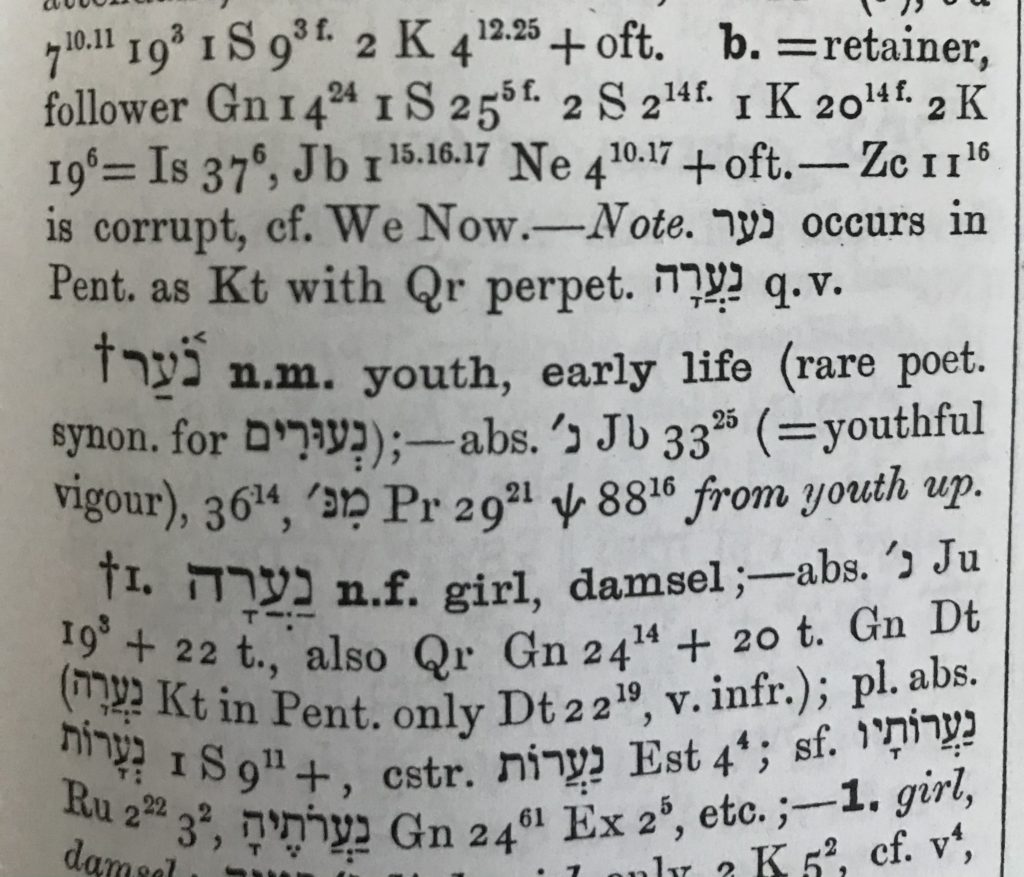Today’s post is by Tali Artman Partock and examines the much-neglected topic of the rape of men in rabbinical texts. Tali studied Hebrew literature and psychology as an undergraduate, followed by a Masters, and PhD in rabbinic literature, all at the Hebrew University of Jerusalem in Israel. Her diverse research interests lie in the areas of Judaism and early Christianity; midrash, folktales and hermeneutics; gender studies; and the Bible in literature and film. Tali teaches at the Faculty of Divinity of the University of Cambridge, and Leo Baeck College.
_________________________________________________________
The rape of men is something that is often just hinted at in the Hebrew Bible. It tends to be confined to, or is threatened during times of war, or in warlike situations. The rape of men by men in “everyday life” is not only not mentioned, but is not even conceptualized, or labelled as rape. In fact, as both Judith Hauptman and Ronit Irshai argue [i], the word “rape” in the Hebrew Bible refers only to penetration of a female virgin without the authorization of her father.
The early layer of rabbinic literature (that is, Tannaitic literature, 2nd-3rd century CE), however, marks a radical change. Not only is the forced penetration of men here becoming marked as rape, but a whole discourse emerges to deal with its criminal and sacral implications.
The problem troubling the rabbis concerns the soul both of the rapist and of the raped. But above all else, the rabbis want to prevent the crime. Towards that purpose, from a Jewish legal perspective, the Mishnah allows an extraordinary thing: namely, the right not only of the rape victim but of any bystander to kill the attacker-rapist in (self-)defence.
The first text to address the issue in a legal codex appears in the Talmud in Mishnah Sanhedrin 8:7 (edited circa 220 CE). Here it says:
“The following must be saved even at the cost of their lives: he who pursues after his fellow to slay him or after a man or a betrothed maiden [to rape them].”
This is not only a recognition of the danger of rape of men by men, but a conceptual revolution. The idea of pre-emptive killing of the pursuer extends from the right to self-defence in the case of attempted murder. But how? The answer comes from the fate of the raped betrothed maiden (mentioned in Deuteronomy 22:24), who is sentenced to death herself, even though she was raped, because the rape happened “in the town.” In other words, the rape, beyond being terrible in itself, leads to the victim’s death (on sacral grounds), and to the attacker’s death (on criminal and sacral grounds). In that sense, raping a betrothed virgin is like murdering her, making the argument of killing in self-defence comprehensible. The same logic is then applied to the biblical verses regarding male-male sex: here, too, the death penalty is threatened for both the penetrator and the penetrated (Leviticus 20:13).
The Bible does not address the problem of coercion when it comes to men, which poses an ethical dilemma for the rabbis, and an opportunity to learn something new: that in this case, too, rape is like murder, and killing in self-defence, therefore, permissible. This is in line with Roman legislation by Emperor Hadrian, which allowed de facto rape victims (male or female) and their family members to kill the rapist on the spot if caught in the act.[ii]
But what if an attacker is not killed in time (that is, before the rape takes place)? Are rape victims, male or female, to be executed, in the way that might be derived from Leviticus 20:13 and Deuteronomy 22:24? The rabbis have a new agenda here, too. In Sifre to Deuteronomy, Ki Teitzei, a Tannaitic midrash on the book of Deuteronomy, we read:
“Just as when a man rises against his neighbour and murders him (Deut. 22.26), teaches that all who are raped [coerced] in the Torah are blameless, but [also] that we save them by the life [of the one who pursues them] only in this case. Where, then, do we learn that one should [do the same also in the cases of] he who chases his fellow to kill him and after the man [to rape him]? It is said: so is this matter (Deut. 22:26). Can one do the same to he who pursues a beast or desecrated the Shabbat or worships idols? The Torah said: ‘this matter’ [only] (Deut. 22:26), ‘this’ is punished by stoning and all the rest – not by stoning.”
The verse the Sifre relies on is no longer Deuteronomy 22:24, but Deuteronomy 22:25-26: the case of the betrothed virgin who is raped in the field (rather than in the town). In her case, she is found blameless and only her rapist is put to death. This is another step forward for both women and men as victims: not only does this passage offer victims protection (like the Mishnah passage), but it also cleans them of all fault and blame.

The Amoraic Babylonian sources (3rd-6th century CE), much like those from Israel (3rd-5th century) follow the same logic to the same result.[iii] An interesting point is made also about the strange spelling of the word for “maiden”: in Hebrew the word for maiden is na‘arah, whereas the word for a male youth is na‘ar. In Deuteronomy 22:26, unusually, the word for “maiden” is missing the final consonant (transliterated as “ah”). Noting that the spelling is gender-ambivalent, the rabbis reach their conclusion on the basis that just like in the case of a girl (na‘arah) so in the case of a boy (na‘ar) there is no guilt for the raped.[iv]
In its Roman context, the question of rape of men becomes more complicated. On the one hand, unlike in Livy’s testimony, according to which a man who has been penetrated could not stand in a court of law, unless he was raped in war or by pirates [v], rabbinic literature does not deny a raped man any legal rights. On the other hand, the Roman economy of desire, making boys and slaves particularly vulnerable, still influenced the rabbis in many ways – but that will be a subject for a different post.
[i] Judith Hauptman, Rereading the Rabbis: A Woman’s Voice (Boulder, CO and Oxford: Westview Press, 1998), 81; Ronit Irshai, “Rape of Unmarried Women: From Hazal to Maimonides.” Shnaton ha-Mishpat ha-Ivri 28 (2014-15): 177. (Irshai’s paper is in Hebrew.)
[ii] See Jane F. Gardner, Women in Roman Law & Society (London: Routledge, 1995), 118-19.
[iii] There are two main Talmudic traditions: the Babylonian Talmud (Talmud Bavli) and the Jerusalem Talmud (Talmud Yerushalmi). Talmud is aptly described as a discursive and intergenerational rabbinic discussion. It is one primary focus of traditional Jewish scholarship.
[iv] This might be surprising in a Babylonian context. After all, in the Zoroastrian tradition represented in the Videvdad (8:26-32), the punishment for a man who submits to anal intercourse against his will is “eight hundred strokes with the horse whip, eight hundred with the bastinado.” While the editing of the Videvdad might be two or three centuries later than that of the Bavli, much like the Bavli, it, too, reflects oral traditions that are centuries older.
[v] Craig Williams, Roman Homosexuality, 2nd edn (Oxford: Oxford University Press, 2010), 106.






